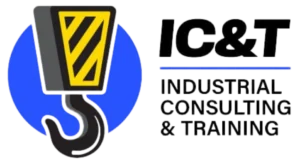
Rigging is an important part of many industries, especially in construction, manufacturing, and energy, where the safe handling and movement of heavy loads are crucial. The role of a rigger requires a deep understanding of equipment, safety protocols, and load calculations, making it a highly specialized skill set. However, rigging also comes with its own set of risks, including equipment failure, load instability, and accidents.
To mitigate these dangers and ensure safe operations, proper training is essential. The Master Rigger Course in Arizona provides advanced, hands-on training designed to prepare professionals for the complex and demanding tasks of rigging. In this blog, we will walk you through the key steps and benefits of enrolling in this course, highlighting how it can enhance your career and improve safety standards in your workplace.
What is the Master Rigger Course?
This course provides the in-depth training necessary to work as a professional rigger. It involves the use of ropes, chains, and other lifting equipment to move and position heavy materials and equipment. A Master Rigger is responsible for ensuring that these loads are safely secured and properly handled. This Master Rigger Course typically covers various topics, including load calculation, rigging hardware, safety protocols, and crane operations.
Why Pursue a Master Rigger Certification?
In Arizona, the construction and industrial sectors continue to thrive, creating a high demand for skilled riggers. By obtaining a certification, you position yourself as an expert in the field, capable of handling complex lifting tasks with precision and safety. It enhances your employability, helps you meet industry standards, and opens up higher-paying job opportunities.
Additionally, completing the course demonstrates your commitment to safety and best practices, which is essential when working in environments where heavy machinery and loads are involved.
According to the U.S. Bureau of Labor Statistics, jobs in the construction industry are expected to grow, and those with specialized skills like rigging are more likely to secure stable positions.
Step 1: Meet the Prerequisites
Before enrolling in the course, you must meet specific prerequisites. Generally, you need to have experience in rigging or a related field, such as crane operation. Some training programs may require a basic certification or a certain number of hours working as an apprentice.
Ensure you understand the specific requirements of the program you’re interested in. Some institutions may require you to have prior hands-on experience or a high school diploma.
Step 2: Choose a Certified Training Provider
To get the best training, you’ll need to select an accredited institution offering a course. Look for schools or organizations that provide nationally recognized certification, ensuring the quality and credibility of the training. Programs should offer a mix of theoretical knowledge and practical experience, helping you apply what you learn in real-world situations.
Step 3: Complete the Course
The course typically involves both classroom instruction and hands-on training. You’ll learn about various rigging techniques, including how to calculate load weight, select the right rigging gear, and ensure safety during lifting operations. The course will also cover safety regulations, rigging equipment maintenance, and industry standards.
It’s important to focus on mastering the fundamental skills, as these will be essential when you’re on the job. Instructors will guide you through different scenarios, giving you the opportunity to practice and refine your techniques.
Step 4: Pass the Certification Exam
Upon completing the course, you will be required to pass a written exam and a practical test to demonstrate your skills and knowledge. The exam typically covers the theoretical aspects of rigging, while the practical test evaluates your ability to apply those concepts in a real-world setting.
After passing the exam, you will earn your Master Rigger certification. This is valid for a specific period, often requiring you to complete continuing education or retake the exam to maintain your credentials.
Step 5: Advance Your Career
Once you’ve earned your certification, you can start applying for positions that require this qualification. Many employers in the construction, oil, gas, and manufacturing industries seek certified riggers to ensure safe and efficient operations.
Having this certification makes you a valuable asset to companies, allowing you to take on leadership roles, such as rigging supervisor or safety officer. It also opens doors to higher wages and job stability, especially in industries that heavily rely on rigging expertise.
Conclusion
This is an excellent opportunity for anyone looking to advance their career in construction and heavy machinery operations. By completing the Master Rigger course in Arizona, you’ll acquire the essential skills and certification needed to succeed in the high-demand field of rigging.
From meeting the prerequisites to passing the certification exam, following these steps will lead you toward a rewarding and stable career. Start your journey today—enroll in the course and take the first step towards becoming a certified professional!

